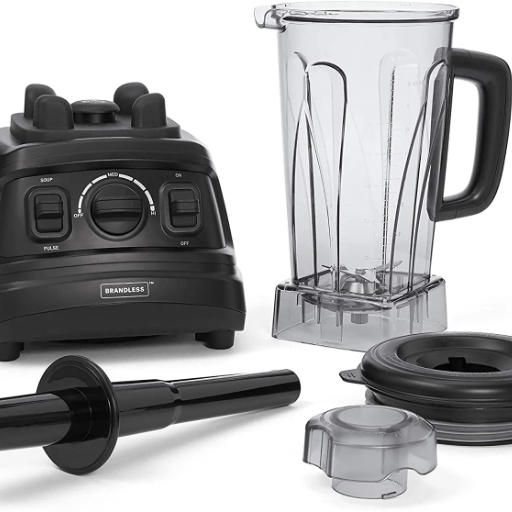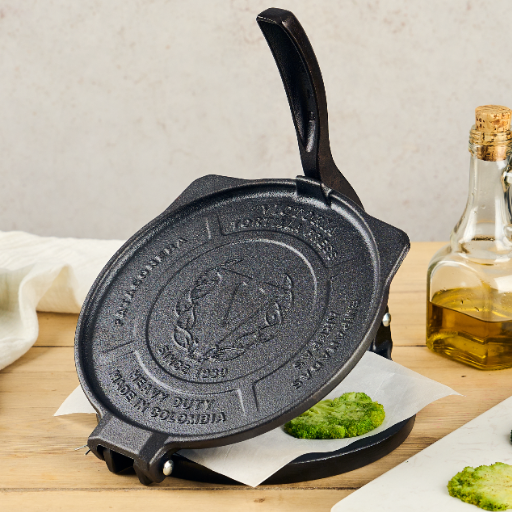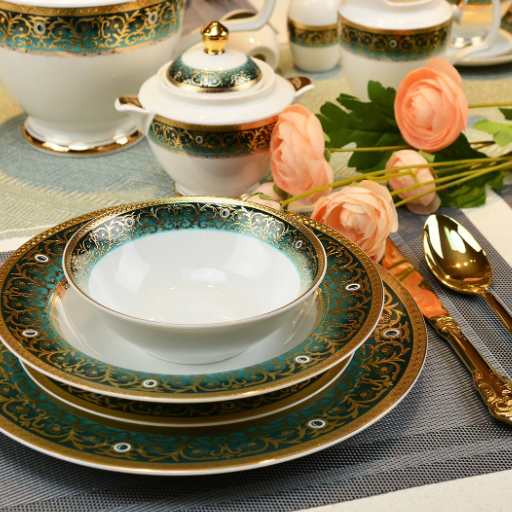Today, in this day and age of comfort and energy saving, selecting the most appropriate electric ceiling fan for your living area is essential. This manual intends to provide you with a general idea about what all things should be kept in mind while buying a ceiling fan that fits into your requirements exactly. We will go over everything from different types of fans available in the market & their sizes to technical specifications such as airflow or blade material, etc., so that you can know every necessary detail required before making any decision related to the purchase. So read on! When you finish reading this article, I assure you you will have gained enough knowledge to help you find the best ceiling ventilator that matches your house decor and has its maximum performance potential.
What Are the Different Types of Ceiling Fans Available?
electric ceiling fan
There are many types of ceiling fans for various needs and preferences. Here are some examples:
- Regular Ceiling Fans: The most basic type with three to five blades that can fit living rooms or bedrooms.
- Low Profile (Hugger) Fans: Designed for low-ceilinged rooms, these fans stay close to the ceiling to provide a subtle cooling effect.
- High-Performance Fans: Made for larger areas where you need high airflow but still want energy efficiency.
- Hunter Fans: Known for their quietness and durability, they often combine old-school looks with new-school features.
- Smart Ceiling Fans: These fans can be manipulated through smartphone apps or voice assistants because they are integrated into smart home systems, which offer convenience and customization options.
- Outdoor Ceiling Fans: Built to endure different weather conditions; perfect on patios, porches, gazebos or any other outdoor dining place where people like sitting under a fan during summer evenings while having dinner outside with friends & family!
- DC Motor Fans: DC motors consume less power than standard fans, making them more energy-efficient and quieter!
- Multi-Mount Fans: They can be installed flat or angled depending on the type of ceiling so they suit different architectural designs
- Eco-Friendly Fans: These are made from sustainable materials designed for conservation of energy coupled with style
- Decorative Ceiling Fans: Designed with an eye-catching appearance, they usually feature intricate details such as wood carving. These serve both decorative and functional purposes!
Each type comes in various styles, sizes, and features, so it is important to consider your space’s aesthetics and specific cooling requirements.
Understanding Flush Mount Ceiling Fans
Flush mount ceiling fans, commonly known as hugger fans, are designed to be installed close to the ceiling. They are perfect for rooms with low ceilings or those who prefer a sleek, modern look. Here are some essential features and technical parameters to consider:
- Height Clearance: Flush mount fans require a minimum ceiling height of 7-8 feet for optimal air circulation and safety. This makes them ideal in spaces where standard mount fans would hang too low.
- Blade Span: The size of the blades affects how much air is moved around the room. Flush-mount fans have blade spans between 36 inches and 52 inches; choose accordingly—bigger rooms need larger spans, while compact spaces should have smaller ones.
- Airflow Efficiency: Airflow efficiency is measured in cubic feet per minute (CFM), which is how much air the fan can move. High-quality flush mounting fans achieve CFM ratings from around 4,000 to over 6,000, so there’s enough cooling power for you during hot days.
- Blade Pitch: The angle at which these wings stick out from their housing, called blade pitch, usually ranges between 12 degrees up to about 15 degrees – this determines how well it pushes air forward while spinning faster; more slant means better performance, though it requires more energy input.
- Motor Type: Most models have DC motors, which consume less power and run quieter than AC motor types often found on other flush-mounted fans.
- Light Kits: Some come with built-in lighting options, such as LED lights or incandescent bulbs that can be attached directly to them, but not all do, so make sure you get one if needed.
- Controls Options: Most have remote controls that enable users to control their speed settings without having physical contact with them. plus, they also have wall-mounted controls where users can switch it on/off by touching anywhere near its sensor area or a button explicitly provided.
By considering these factors and technical parameters, homeowners can choose a flush-mount ceiling fan that not only enhances their living space aesthetically but also functions effectively for ventilation and comfort.
Exploring Modern Ceiling Fan Options
Regarding modern ceiling fans, there are several things to consider. These include style, energy efficiency, noise levels and installation. Here are some short answers with insights from the top sources:
1. What styles can I choose from?
Modern ceiling fans have many styles today, such as contemporary, industrial, or traditional designs. Each style can fit different room aesthetics, whether sleek and minimalistic or vintage and decorative.
2. How much energy do they save?
Energy Star-rated ceiling fans claim to save up to 60% more than regular ones. They most often use LED light bulbs for energy efficiency and DC motors for noise reduction.
3. Do they make any noise?
This is an important point, especially in bedrooms. Fans powered by DC motors work quieter than those with AC motors, usually producing less than 30dB—that’s as loud as whispering!
4. Can I buy an intelligent fan?
Many modern ceiling fans have smart features integrated into them, so you can control them through your smartphone or even voice commands. You can adjust speeds, control lighting, or set timers, which makes using them more convenient and energy-saving.
5. What should I know about installation?
Installing modern ceiling fans is usually not difficult at all, but there might be some particularities depending on the fan design itself or if a light kit is included in the package. For example, the flush mount type is suitable for rooms with low ceilings, where larger models may require different mounting methods.
Technical Parameters to Consider
- Size: From 36″ up to 60″ in diameter, chosen according to the room size.
- CFM Ratings: Between 4K – 6K; designed airflow optimization (model dependent).
- Blade Pitch: Higher degrees (12° -15°); better airflow circulation.
- Motor Type: Energy-saving DC motor with quiet operation.
- Light Options: Different types of bulb compatibility affect lighting output & consumption efficiency; LEDs are recommended because they are energy-efficient.
By considering these factors and their corresponding technical specifications, homeowners can select the most appropriate modern ceiling fan.
Features of Dual Ceiling Fans
Dual ceiling fans, often designed for bigger spaces, combine beauty and utility that can significantly increase air circulation. Below are some of their main features:
- More Airflow: These fans usually have two sets of blades which means they can move twice as much air as single-fan units. That is why they are most effective in big rooms or areas with many open spaces.
- Many Design Options: Dual ceiling fans are available in different styles and finishes to match any interior decor, from classic to modern.
- Saving Energy: Many models have DC motors, which save power because they use less electricity while still producing strong airflow that cools the room, thus reducing utility bills.
- Integration with Smart Technologies: Like many single modern ceiling fans, some double ones come equipped with intelligent features enabling users to operate them remotely via mobile applications or voice commands.
- Variable Lighting: Dual ceiling fans often come with built-in light fixtures that allow people to choose the types and levels (brightness) of bulbs to create the desired atmosphere in the room.
- Different Speeds & Reverse Blade Direction: Most offer more than one-speed setting and allow reversing blade rotation to warm or cool a space depending on the season—clockwise during winter months for warmth and counterclockwise during summer months for a cooling effect.
Technical Parameters:
- Size: The diameter might vary between 42 inches and over 70 inches, therefore fitting larger spaces well.
- CFM Ratings: On average, dual ceiling fans deliver CFM ratings ranging from 5,000 to 10,000, ensuring powerful airflow delivery across more expansive areas.
- Blade Pitch: Usually, blade pitch ranges between 14 degrees up to about 20 degrees; higher pitches allow blades to slice through air more easily, which improves overall flow output efficiency
- Motor Type: Look for those with energy-saving DC motors. Such motors produce less noise when running but consume less power than AC motors traditionally used in this category.
- Light Options: These can work with different bulbs, such as LED and CFL, thus allowing homeowners to choose energy-efficient lighting solutions available in many styles and sizes.
Considering these features alongside technical parameters will enable homeowners to choose their space and design best while ensuring maximum performance.
How to Choose the Right Size and Color for Your Ceiling Fan?
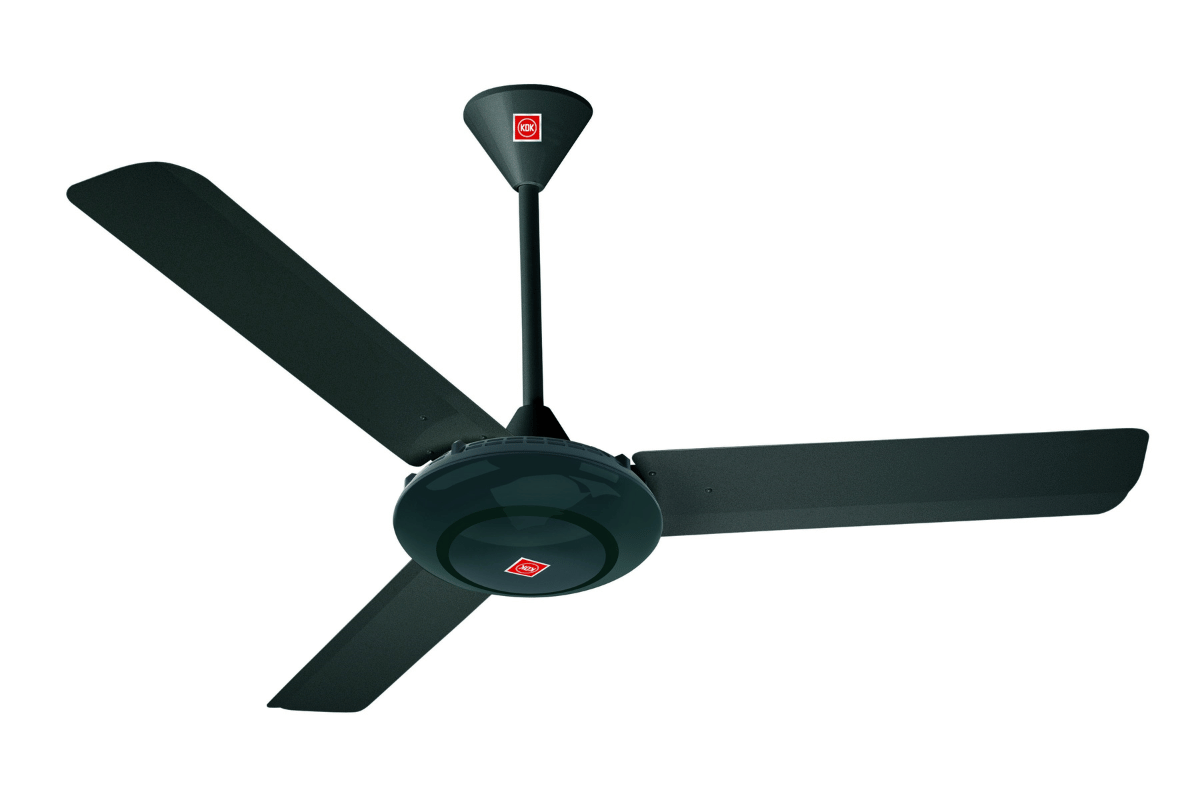
Choosing the right size and color for your ceiling fan is vital to improve your space’s functionality and aesthetics.
Size
- Room Dimensions: You should consider matching fan sizes with the dimensions of each room; a good rule of thumb is to select fans whose blade spans are between 29-36 inches when dealing with rooms less than 75 sq ft. For medium-sized spaces such as those measuring up to 400 square feet in area, it would be appropriate to use fans having blade spans ranging from 42” – 48”. However, if the room exceeds this square footage by more than double or triple its original size then more giant fans (52”+) should be used since they have been known to cover larger areas optimally.
- Blade Height: For air circulation to occur effectively, a fan must hang at least 7 feet above the ground. There should also be a clearance of between twelve inches and the ceiling, especially where low ceilings are involved.
2. Color
- Match Existing Decor: Choose colors that complement your current interior design. The most common finishes used include white, black chrome, and wood tones, which can either blend or contrast depending on one`s personal taste.
- Consider Lighting: If light fixtures are part of these devices, then ensure that their shades or bulbs are made so that their color matches not only them but also other parts surrounding them, including walls, etcetera, thus creating an overall pleasing appearance within this space.
- Consistency in Style: The hue of any air cooling machine should also reflect the atmosphere you want in such rooms. For example, brighter hues will make it feel more open, while darker ones might add a touch of classiness or coziness.
When choosing a ceiling fan, considering both size and color can help transform living spaces into comfortable stylish havens.
Selecting the Right Inch Size for Your Room
Picking the right inch size for your ceiling fan is essential to maximize its efficiency and ensure proper airflow. Below are some rule-of-thumb measurements from reputable sources:
1. Room Size – Blade Span:
- Small rooms (up to 75 sq ft): 29” – 36”
- Medium rooms (76 – 400 sq ft): 42” – 48”
- Large rooms (over 400 sq ft): 52” or more
2. Ceiling Height:
- For up to 8 feet of ceilings, hang the fan so that the blades are between 7 and 9 feet above the floor.
- Use a download to extend the fan downward to the recommended height for higher ceilings.
3. Blade Pitch:
- 12-15 degrees blade pitch is suitable for moving air. This slope increases circulation efficiency while keeping power consumption within reasonable levels because it balances comfort and energy usage.
4. Motor Size & Type:
- Ensure that your motor is appropriately sized relative to blade length; generally speaking, larger fans need stronger motors not to lose their ability to move air effectively. DC motors are quieter and consume less electricity than conventional AC ones.
5. Variable Speeds:
- Make sure there are at least three-speed settings available on any given model so different speeds can be selected depending upon specific requirements of space being served by the unit at any given time under various circumstances likely to arise throughout the year, including changes in weather conditions which affect the rate at which heat is transferred into space from outside as well inside causing temperatures within the room itself to rise fall thereby necessitating adjustment of equipment’s operational intensity accordingly among other things.
Considering these technicalities will enable you to select an appropriate ceiling fan size that cools people off while making them comfortable without wasting energy. Thus, you will save money and resources and enhance the beauty of the living area around it.
Popular Colors for Modern Ceiling Fans
One of the most important aspects of choosing a ceiling fan is its color. Here are some trendy colors for modern ceiling fans and their technical justifications.
1. White: A timeless option that suits any decor. It’s usually used in small rooms to keep them bright and breezy.
- Technical Justification: It reflects light well, increasing the room’s brightness.
2. Black: Sleek and modern, black fans make great statement pieces. They can create contrast in lighter spaces or blend with darker interiors.
- Technical Justification: They often have energy-saving DC motors that maintain airflow without producing much noise.
3. Brushed Nickel: This metallic finish gives a contemporary feel and can match different styles, from industrial to minimalist.
- Technical Justification: Typically combined with broader solid blade materials that support adequate airflow due to their wider span.
4. Wood Finish: Warm wood tones like oak or walnut give off a rustic/eclectic vibe. These are best suited for living areas or family rooms.
- Technical Justification: Normally made with stronger blade pitches so they can move more air in larger spaces.
5. Grey: Grey has become a popular neutral choice, working well in contemporary settings and creating an elegant look.
- Technical Justification: It is ideal for fans with variable speeds because it forms a subtle background that complements dynamic design.
6. Bronze/ Oil-Rubbed Bronze (ORB): Dark bronze creates vintage/farmhouse appeal making it suitable for traditional interiors
- Technical Justification: Matches up with heavier blade designs which offer better airflow efficiency
7. Cream/Ivory: Creamy/ivory colors create soft warm atmospheres especially desired in specific environments
- Technical Justification: Such colors help to retain warmth within lighting systems, thereby building comfort in social areas
8. Blue/Green Seafoam Green/Turquoise/Aqua Marine etc..): These shades are becoming popular for playful or coastal-themed rooms; they also work well as accents in children’s bedrooms or casual spaces where whimsy is desired.
- Technical Justification: Fans painted in these shades often feature energy-saving motors that run quietly while adding fun to the décor
9. Red: Red ceiling fans are unusual and make bold statements, they can be used as focal points in themed or eclectic rooms.
- Technical Justification: Usually come with variable speed settings which can cater for high traffic or various levels of activity
10. Stainless Steel (SS): Primarily a modern finish, stainless steel combines functionality with style, making it applicable in industrial or contemporary spaces.
- Technical Justification: Often durable coupled with high-performance motors hence ensuring long life span and adequate airflow
Choosing the right color affects how good your fan looks and aligns with practical features that improve its efficiency and effectiveness.
Advantages of Black, White, and Wood Finishes
1. Black Coatings:
- Aesthetics: Modern looking black ceiling fans contrast very well with light walls and are thus typical for contemporary interiors.
- Technical Justification: Black-colored finishes tend to be strong. They can withstand heat and moisture without losing quality, as most of them have high-quality constituent materials.
2. White Coatings:
- Adaptability: White ceiling fans can blend with various decorative styles, from traditional to minimalism, making them suitable for any interior.
- Technical Justification: White fans usually have corrosion-proof coatings, so they can last long even when exposed to different atmospheres, especially at the coast, where salty air may cause damage.
3. Wooden Coatings:
- Natural Warmth: Wood-finished surfaces create a cozy feeling in space, making them suitable for rustic or farmhouse designs.
- Technical Justification: Many fans with a wood finish employ heavy, solid wooden blades that, due to their weight and design, not only look beautiful but also enhance airflow efficiency.
In general, whether one chooses black, white, or wood finishes not only affects how a room looks but also aligns itself towards practicality, thereby improving performance and durability under different environmental conditions.
What Should You Consider When Buying a Ceiling Fan with Light?
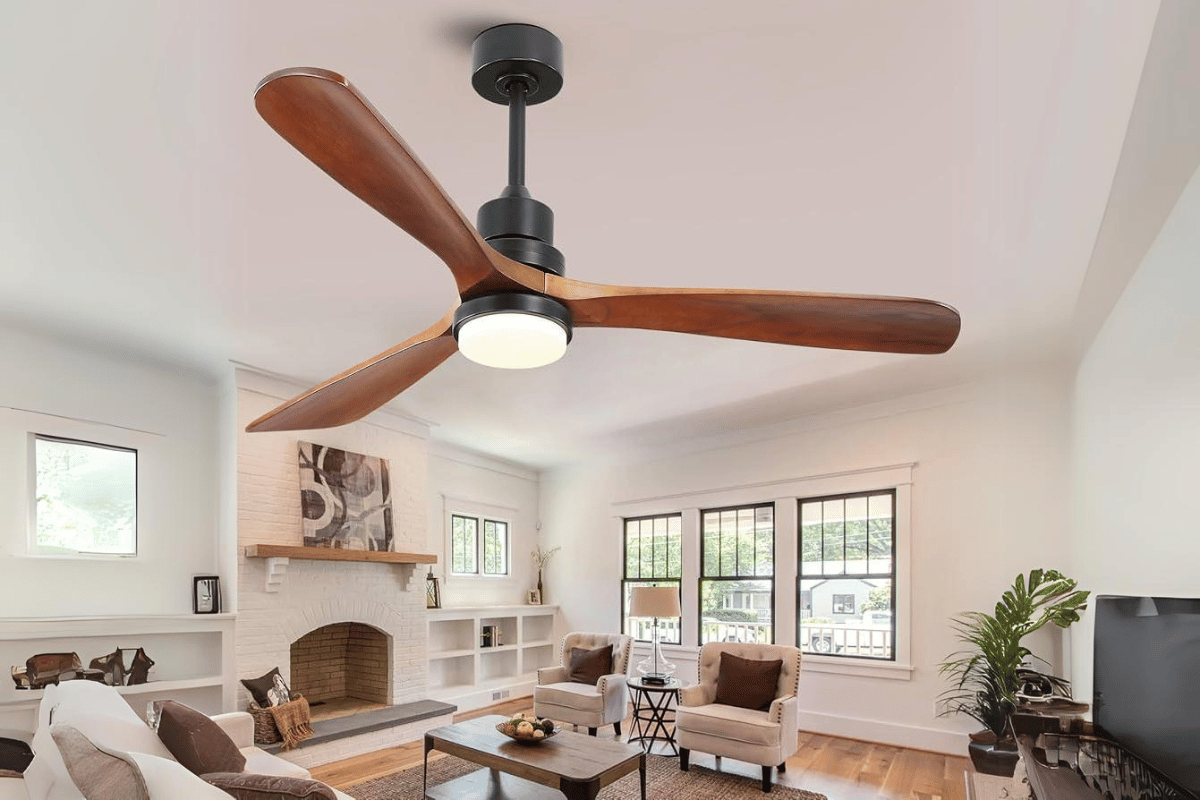
When picking a ceiling fan with light, remember the following:
- Brightness and Type of Light: Assess the wattage and type of bulbs – LEDs, CFLs, or incandescent – because they determine brightness as well as energy efficiency. An adjustable brightness feature or one that changes color temperature can be very handy depending on the time of day or activity.
- Fan Size & Blade Span: Select an appropriate size for the space available and consider blade spans to ensure that it has enough motor power to move air effectively.
- Control Options: Think about how you want to control fans and lights together. You can use pull chains, wall controls, or remote controls; alternatively, some modern fans even have intelligent features compatible with home automation systems.
- Style & Finish: Choose something that will match your interior design style. Fans come in different styles, such as traditional, contemporary, or industrial, and finishes may include polished metals or rustic woods.
- Energy Efficiency: Check whether there is any mention of its consumption levels vis-à-vis what other models offer, then choose accordingly, especially if it’s marked as an ENERGY STAR product, since they tend to consume much less power hence saving more money on electricity bills over time
- Installation Requirements: Determine if standard mount, flush mount or downrod mount should be used based on ceiling height, along with whether professional installation may be needed in each case
- Warranty & Quality: Look out for robust warranties backed up by positive customer feedback concerning longevity because these indicate good quality standards backed up by solid performance over more extended periods of use
By paying attention to these points, you’ll be able to select a ceiling fan with light that will serve you well while at the same time improving your living space
Benefits of Ceiling Fans with LED Lights
Ceiling fans with LED lights provide many advantages for increasing the comfort and efficiency of residential areas. Some main benefits are listed below, together with corresponding technical parameters:
- Energy Efficiency: Traditional incandescent light bulbs consume much more electricity than LEDs and generally use about 80% less energy, lowering power bills and reducing environmental pollution.
- Long Life Expectancy: Incandescent lamps have an average lifespan of around 1,000 hours while LED bulbs can last for about 25,000 hours or even more. This means there will be less need for replacements resulting in decreased waste production.
- Various Lighting Options: Several ceiling fans equipped with LED lights offer adjustable brightness levels or color temperatures so users can select the most suitable mode according to a particular time of day or activity being performed; e.g., daylight white (5000K) is ideal for working area illumination whereas warm white (3000K) creates a cozy atmosphere.
- Better Air Movement: Ceiling fans have been designed to move air effectively. When operated clockwise, they help cool rooms during the summer months and distribute warmth produced by heating systems throughout the winter. This dual function ensures a comfortable living environment all over the year.
- Beauty Appeal: These types of appliances are made available in different designs and finishes; thus, they can easily match any interior decor while simultaneously serving functional and decorative purposes.
- Economical Lighting Solution: When combined with a fan’s energy-saving capabilities, these two features make this product highly cost-effective over the long term, thus making it affordable for most homeowners.
- Intelligent Connectivity: Most contemporary models allow integration into smart homes, enabling such functions as remote control operation via smartphones or tablets and integration into broader home automation networks, thereby providing additional convenience benefits.
- Environment Friendliness (Green): Fans’ low power consumption and LEDs’ efficient energy utilization reduce the carbon footprint left behind after the electricity generation process, making them ecologically viable alternatives.
- Silent Running: Unlike air conditioners, these devices run quietly, providing smooth airflow without causing annoying noises.
- Safety First: LED lamps produce less heat than conventional light sources, thus reducing the chances of getting burnt or causing fires and, therefore, increasing safety within domestic environments.
Selecting a ceiling fan with built-in LED lights will enhance visual appearance and ensure its energy-saving performance, which is good for your pocket and environment.
Understanding Dimmable and Adjustable Lighting Fixtures
Dimming and adjusting lights offer extra control over the atmosphere and brightness of a room. Here is what you need to know, according to some of the best online resources:
1. Dimmable Lights: These allow users to change the brightness of a light to suit different activities or moods. They use a compatible dimmer switch that lowers the power going into the light source.
2. Kinds Of Dimmable Lights:
- LEDs—Some modern LEDs are dimmable, but only if you use bulbs specifically designed to be dimmed with compatible switches; otherwise, they may flicker.
- Incandescent & Halogen Bulbs — These bulbs have long been easily dimmed, giving them their warm quality.
- CFLs—Compact fluorescent lamps can also be dimmable, but like LEDs, they require compatibility with particular types of dimmers.
3. Adjustable Lighting: Fixtures that can be moved (e.g., wall-mounted or track lights) direct light where needed. This helps provide better task lighting in spaces, allowing for more localized illumination in work or creative areas.
4. Technical Considerations:
- Wattage — The wattage rating affects how much light is put out and how well it can be dimmed; check the maximum wattage supported by the dimmer when dealing with LED fixtures.
- Lumen Output — How bright a light is measured in lumens – consider this especially if you want to have options for dimming.
- Dimming Range — Different fixtures have different ranges for being able to dim (usually shown as a percentage), which affects how low the light can go.
5. Benefits Of Dimmable And Adjustable Fixtures:
- Energy Efficiency – When you dim lights down, they use less energy and last longer before burning out.
- Mood Setting – Being able to adjust your fixtures means creating inviting environments that are tailored to specific occasions or needs at any given time.
- Cost Saving – Saving electricity also saves money, and that’s always good.
Adding adjustability with dimming capabilities to your lighting design can greatly improve a space’s function while making it look better. This saves energy and money because people will have light when needed but not all day long. Always double-check compatibility between fixtures and controls for best performance.
Light and Remote Control Options
Many things should be considered when one thinks about light and remote controls. These are a few of the most essential factors and technologies:
1. Systems for Smart Lighting: Many modern lights can be used with smart home systems. Examples of such systems are Philips Hue, LIFX, and Wyze. Through smartphone apps or voice commands like Amazon Alexa or Google Assistant, intelligent lights can often be controlled even when you’re away from home.
2. Dimming Controls: Dimming modules or intelligent light switches usually enable remote dimming. These devices must work well with existing fixtures without any hitches in their integration, so check out the following critical technical parameters:
- Protocol: Some standard protocols include Zigbee, Z-Wave, Wi-Fi, etc.. Therefore, it is advisable to make sure all your remote devices use similar ones to communicate effectively between them.
- Load Capacity: You should know the maximum load capacity of a remote dimmer lest you overload it.
3. Lighting Scenes: Users can use various intelligent lighting systems to design specific lighting scenes suitable for different hours or activities. They do this by modifying pre-set scenes, which change brightness levels and color temperatures. Thus, such interfaces need to accommodate multiple illumination profiles.
4. Scheduling Features: Scheduling features are found in most brands’ remote control options. Setting timers to switch on/off lights while one is not around enhances convenience and safety.
5. Compatibility with Existing Wiring: Different smart controls may require neutral wires during installation; hence, before anything else, ensure that they’ll still work within your present wiring configuration setup. Otherwise, go for alternatives that don’t demand such additional connections.
In addition to being convenient, these choices foster energy efficiency and adaptability within residential illumination solutions. Always cross-check technical specifications alongside compatibility aspects between already installed light systems vis-à-vis potential remote control gadgets for best results during use.
What Are the Benefits of Reversible Ceiling Fans?
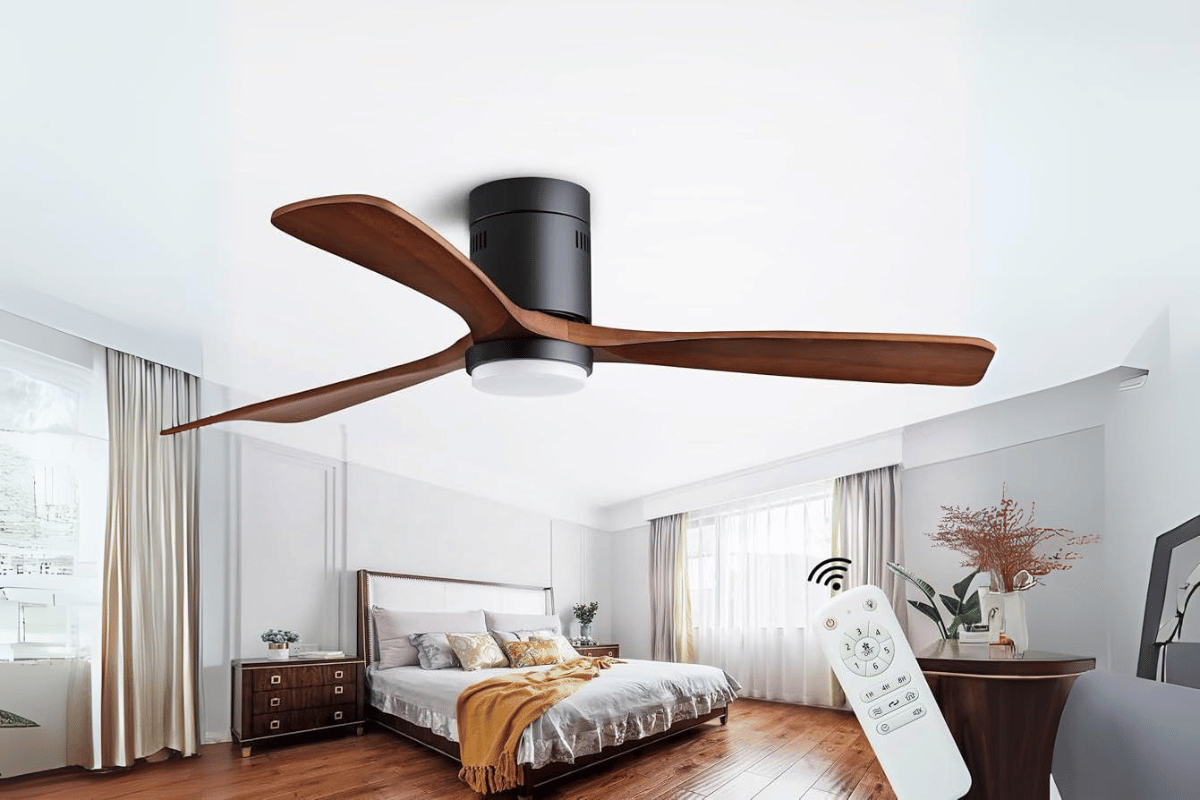
Reversible ceiling fans can be worked in two directions, which is just one of the many things that make them great. For example, during the hot summer months, they can spin anti-clockwise (when viewed from below) to create a cooling breeze, or in winter, they can rotate clockwise to move warm air that is trapped near the ceiling downwards. This leads to better energy efficiency as it helps keep a comfortable temperature without relying too much on heating and cooling systems. Another thing about reversible fans is that they help save money on electricity bills by evening out indoor temperatures throughout the year, making living spaces more pleasant overall. Moreover, many models have remote controls and built-in lights, which add convenience and style to any room design! To sum it all up – if you want comfort and savings, then go multifunctional!
Year-Round Comfort with Dual Directional Blades
Reversible ceiling fans with dual-directional blades are efficient for altering temperatures and conserving energy. When turning anticlockwise, these blades push air downwards, creating a cooling wind chill effect on people during hot seasons. Vice versa, they spin in a clockwise direction so as to pull warm rising air down, which is then circulated around, thereby promoting comfort during cold weather.
To make the most out of such fans, you must take into account specific technical aspects as follows:
- Blade Pitch: The angle at which the blade is set dramatically affects how much air it moves. A pitch between 12 and 15 degrees would be ideal for achieving adequate two-way airflow.
- Motor Type: DC motors are commonly found in top-notch models because they use less power and produce less noise than traditional AC ones.
- CFM (Cubic Feet per Minute): This indicates the air volume circulated by a fan within one minute. Choose units with CFM ratings between 4000 and 5000 for adequate cooling and heating distribution.
- Fan Size: The blade’s length should match the dimensions of your room; e.g., a 52-inch span suits spaces up to 400 square feet.
- Speed Settings: Choose those with various speeds so that you can regulate the amount of airflow required during different seasons.
These parameters enable homeowners to select reversible ceiling fans that improve all-year-round comfort while still saving energy.
Energy Efficiency of Reversible Ceiling Fans
Not only do reversible ceiling fans improve comfort, but they also promote energy conservation throughout the year. This is a summary of energy-saving benefits and related technical parameters collected from reputable websites after extensive research:
- Cost-effective: Reversible ceiling fans save energy by circulating air instead of relying on heating or cooling systems. In summer, they produce wind chill that increases thermostat settings up to 4°F, and in winter, without overworking HVAC units, they help redistribute warm air.
- Energy star rating: Choosing a fan with an energy star means that it follows strict efficiency guidelines. Energy-saving models can use 60% less power than ordinary ones.
- Motor Efficiency: DC motors are common in reversible fans today, and they consume around 70% less electricity than traditional AC motors. This makes them operate more quietly and last longer.
- Blade Pitch and CFM: Fans should be able to achieve an optimal CFM rating by having blades set at a pitch angle between 12 and 15 degrees; additionally, higher airflow efficiency is realized if CFMs are rated higher within the range of 4000-5000, thus providing efficient cooling during hot seasons as well as heating in cold seasons.
- Climate Control: Room occupants can maintain comfortable temperatures by changing the direction of rotation, reducing energy usage. Such versatility also avoids the need for extra air conditioning or heating, thereby cutting down on power bills even further.
- Integration with intelligent technology: Many recent reversibles are designed with inbuilt smart functionality, allowing remote control operation and timed settings activation so that users can turn them on/off when necessary, thereby cutting back on wastefulness.
Following these pointers about saving energy will enable householders to make choices based on what improves their comfort and what significantly reduces the power consumed, leading to much lower bills.
How Does Modern Innovation Enhance Air Flow?
Various technological advances and design upgrades of the current day significantly amplify the flow of air. The following are the most important among them:
- Engines of Changeable Speeds: These engines enable fans to change their velocity as per the airflow required in a particular room, thus enhancing general air circulation while using minimum power.
- Aerodynamic blade Design: Fans with blades designed especially to reduce air resistance and increase efficiency, whereby optimization can improve flow by 30%—20%.
- Control Systems: Advanced control systems, often integrated with smart home technologies, allow fan operations to be adjusted more precisely. These systems may include scheduling features, remote controls, or even intelligent heat regulation, where maximum people and temperature require optimal airstream.
- Better Materials: Fans’ performance is improved when made from light but strong materials; for example, composite materials allow larger blade sizes without compromising on structural integrity.
- Cross-Flow Technology: Some more giant space fans use cross-flow technology, which draws air from one side and expels it on another, creating an even broader continuous pattern of airflow.
- Environmental Sensors: These sensors detect humidity levels, temperature, quality or purity, etc.; hence, they will automatically change fan speeds to ensure the best possible rotation and comfort within the space.
By paying attention to these innovations, manufacturers have developed products that not only increase ventilation but also save energy and enhance user experience in homes. Such steps forward combined make people comfortable overall yet still conserve electricity.
How to Install and Maintain Your Electric Ceiling Fan?

An electric ceiling fan is installed following steps to be safe and work well. The first thing that you need to do is turn off the power from the circuit breaker so that there will be no electrical accidents. You should then choose a good location for your fan, ideally in the middle of the room, and ensure the ceiling supports it. Use a bracket to mount the body of your fan on the roof, then connect wires right according to what has been directed by its manufacturer. This commonly involves connecting black wires with blacks, whites with whites, and green or copper to the ground. Once all connections have been secured, fix blades on your fun plus a light kit, if any, and lastly, put back power, then test it to know if everything is working as expected.
It’s important to service your ceiling fan regularly if you want it to perform at its best for many years. Dusting off its blades, often using a soft cloth or vacuum cleaner attachment, helps prevent accumulation that can slow down air flow through them. Also, check the screws holding each blade in place once in a while. Just make sure they’re tight enough and still not loose anyway, but again, if there are burnt-out bulbs where fans are fitted with lights, replace them immediately. also, consider using energy-saving LEDs since this sometimes saves electricity charges too much! Moreover, change the direction in which air moves around during different seasons besides heating and cooling needs, especially when winter approaches, because we would like to stay warm throughout the entire year. Even though these steps may appear easy, they will always work great.
Step-by-Step Guide to Installation
- Collect Your Tools and Materials: Before you start, make sure you have all the necessary tools. These include a ladder, screwdriver, wire cutter/stripper, electrical tape, and voltage tester. You will also need the fan unit and a mounting bracket if one is omitted.
- Turn Off the Power: At the circuit breaker, switch off the power to the current light fixture or fan. Before continuing, use a voltage tester to make certain that no electricity is running through any wires.
- Remove the Existing Fixture: If you are replacing an old fixture, unscrew it from the ceiling carefully. Then, take apart the wiring by unscrewing wire nuts and noting which wires were connected where.
- Install Mounting Bracket: Attach a mounting bracket securely to your ceiling using provided screws if your fan comes with one. Ensure it is level so that the fan does not wobble during operation.
- Connect Wiring: Depending on your ceiling fan’s model, three wires usually need to be connected: black power wire connects with black wire; white neutral connects with white wire; and green or copper ground connects with ground wire. Each connection should be secured tightly with a wire nut and then wrapped in electrical tape for extra safety.
- Attach Fan Body: Once the wiring is connected, lift up the fan body and fasten it onto the mounting bracket according to the manufacturer’s instructions. Make sure it is fixed firmly in place.
- Install Fan Blades: Stick blades onto the fan body. Some fans require blades to be put in before the light kit, whereas others allow for installation afterward—follow the instructions for your specific model.
- Install Light Kit (if applicable): Connect the light kit (provided) to your fan following the directions, then tighten everything properly so nothing rattles loose over time.
- Restore Power: After making all connections secure, go back around the breaker box and turn everything back on again, including main switches and individual room circuits if necessary—just because we turned them off earlier doesn’t mean they should stay off forever!
- Test Fan: Use a wall switch or remote (if applicable) to turn on your fan now and check if it rotates the right way as well as blows air down towards the floor – you can always adjust the direction later, too. Also, try different speed settings to see which one works best for you.
Technical Parameters Justification
- Mounting Height: For best airflow and safety, a ceiling fan should ideally be mounted 7 to 9 feet above the floor.
- Blade Span: The fan blade span can range from 42 to 60 inches depending on room size. Larger rooms may need wider blade spans for more effective air circulation.
- Wattage: Ceiling fans generally use between 50 and 100 watts of power depending upon their size and design features; however, energy-saving models could consume much less than this figure.
- CFM Efficiency: When selecting a model, take note of its CFM (Cubic Feet per Minute) rating, which shows how much air the device moves around every minute. The higher the number, the greater the airflow, with at least an efficiency rating of 100 CFM/watt being good for energy-saving purposes.
Following these steps, along with considering these technical specifications, will help ensure that your electric ceiling fan is installed safely and efficiently.
Tips for Regular Maintenance and Cleaning
- Dusting the Blades Regularly: Dust the blades with a soft cloth or microfiber duster. This promotes maximum air circulation and lengthens the fan’s lifespan. Aim to clean them at least once per month.
- Check and Tighten Screws: Periodically inspect all screws as well as connections to ensure they are tight enough. If they get loose, it can cause wobbling, leading to noise that may affect how well the fan works.
- Clean the Motor and Pull Chain: Use a damp cloth to gently wipe down dust from the motor so it does not accumulate over time. For fans with pull chains, keep wiping them frequently using a soft cloth for better functionality.
- Look for Damages on Fan Parts: Regularly check for chips or cracks on each blade and inspect the motor housing for signs of wear. Taking action early enough prevents further damage.
- Lubricate Bearings: To ensure smooth operation, apply the recommended lubricant to your bearing-type fans only once every year.
- Balance Blades: If you notice wobbles during operation, use blade balancing kits available in most hardware stores to adjust alignment accordingly; when appropriately aligned, quietness is guaranteed while energy efficiency is enhanced.
- Replace Burnt-Out Bulbs: If integrated lighting is part of your fan design, replace all burnt-out bulbs immediately; otherwise, adequate illumination within your space will be significantly compromised.
- Seasonal Reversing Switch Operation: Use the reversing switch correctly – counterclockwise (during summer) or clockwise (during winter) – based on the needs for ideal airflows through different seasons of the year
- Dust Ceiling & Fan Housing: Ensure all areas surrounding where the exhaust exits into the room are kept free from dust, including upper parts such as the ceiling itself and lower sections such as those close to where the fan attaches to the wall, etc.
- Annual Professional Inspection: Once per year, consider seeking the services of an expert technician who can help detect mechanical faults that may not be readily noticeable during standard routine maintenance procedures
Technical Parameters Justification
- Balancing Weight: Balanced blades reduce noise and enhance operational efficiency. Use a blade balancing kit to adjust.
- Type of Lubrication: To ensure optimal motor performance, use the proper lubricant as the manufacturer recommends.
- Wattage and Energy Use: For best results, energy consumption should be between 50 and 100 watts, while cleaning regularly ensures efficient use of power.
A ceiling fan should be maintained to last long and serve its purpose well. This will also help save energy in the house overall.
Ensuring the Longevity of Your Ceiling Fan
To ensure your ceiling fan stays in good condition for a long time, consult experts on multiple home improvement websites. Below are the main steps to properly care for your ceiling fan, together with their technical parameters:
1. Regular cleaning: Dust and debris can accumulate, affecting the machine’s performance; therefore, clean blades frequently using a soft cloth.
- Technical parameter reason: The efficiency of airflow may be increased by ensuring that no dust or any other particle is trapped on the blade, which might act as resistance to motion, thus causing this component to fail early.
2. Check and tighten mounting hardware: If screws become loose or fittings get damaged, vibration and noise problems will arise.
- Technical parameter reason: It ensures that all system parts are well supported mechanically, thereby preventing failure due to insufficient strength at some points.
3. Inspect electrical components: Check wiring connections periodically because they wear out over time.
- Technical parameter reason: This prevents electrical failures, improving the fan’s safety and reliability.
4. Lubricate moving parts: Use lubricants at the recommended points by the manufacturer to reduce friction between them as they rotate against each other during operation.
- Technical parameter reason; Lack of proper lubrication leads to overheating, which causes damage because there must be smooth running between different movable elements making up this device otherwise, it won’t last long.|
5. Monitor performance: Listen for strange sounds or observe unusual behavior during use.
- Technical parameter reason: Mechanical faults can easily be identified when such observations are made, thus saving on repair costs that would have been incurred later after a complete breakdown.|
6. Position the fan correctly: Place it where air can circulate freely throughout the room.
- Technical parameter reason: This allows maximum airflow efficiency through all areas’ corners, resulting in less wear caused by overworking.|
7. Use the Fan Seasonally: Adjust settings according to season for energy-saving purposes
- Technical Parameter Justification: Energy consumption should ideally remain within the 50- 100 watt range throughout different weather conditions; hence, correct seasonal settings must be used.
When followed well, these maintenance practices significantly extend the life span of your ceiling fan while keeping it efficient and safe for years.
Frequently Asked Questions (FAQs)
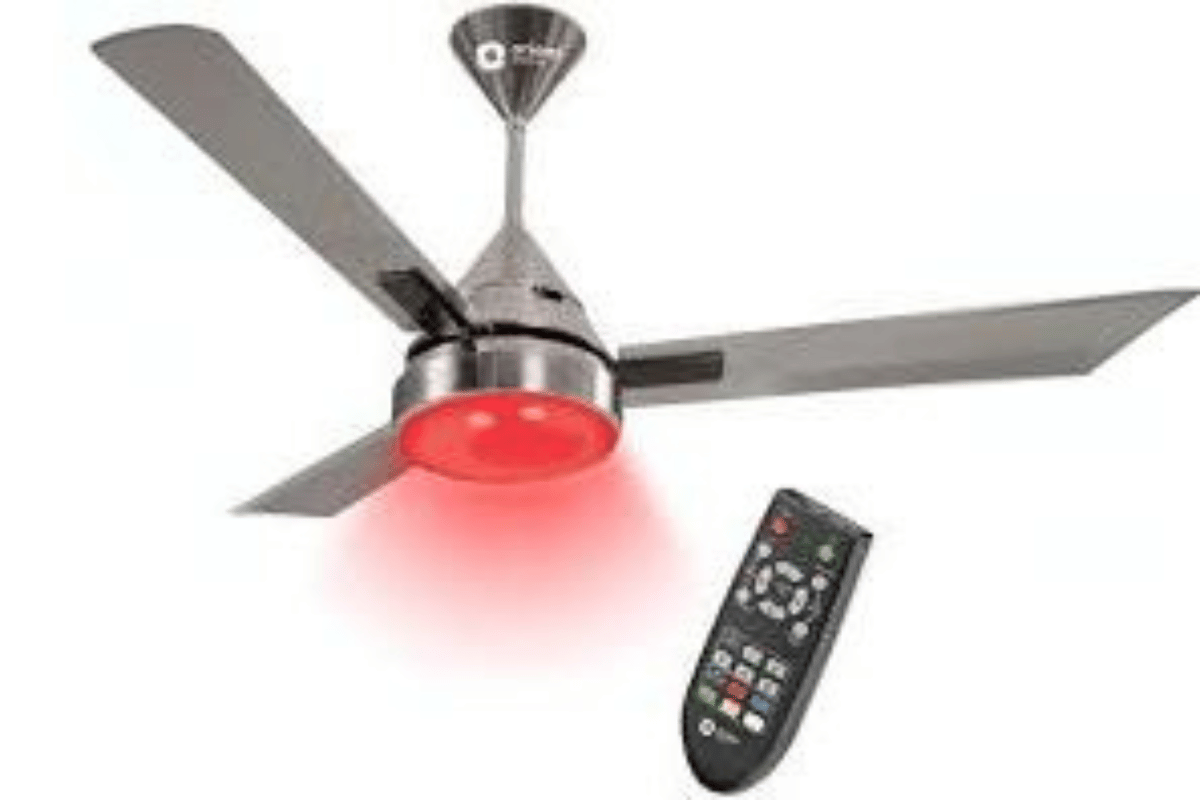
How often should I inspect my ceiling fan?
You should inspect your ceiling fan at least twice a year to ensure that all components are functioning properly and to identify any wear and tear.
What type of lubrication should I use for the fan’s motor?
Always refer to the manufacturer’s guidelines for the appropriate type of lubrication. Most fans typically require a lightweight machine oil.
What are signs that my ceiling fan needs maintenance?
Common signs include unusual noises, irregular performance, wobbling, or if the fan does not start. Addressing these issues promptly can prevent further damage.
Can I use my ceiling fan year-round?
Yes, ceiling fans can be used year-round by adjusting the direction of the blades. Set the fan to spin counterclockwise during summer and switch it to clockwise to circulate warm air during winter.
What is the ideal wattage range for efficient ceiling fan operation?
For optimal energy efficiency, aim for a power consumption of 50 to 100 watts. Selecting a fan with an Energy Star rating can also help ensure minimal energy usage.

